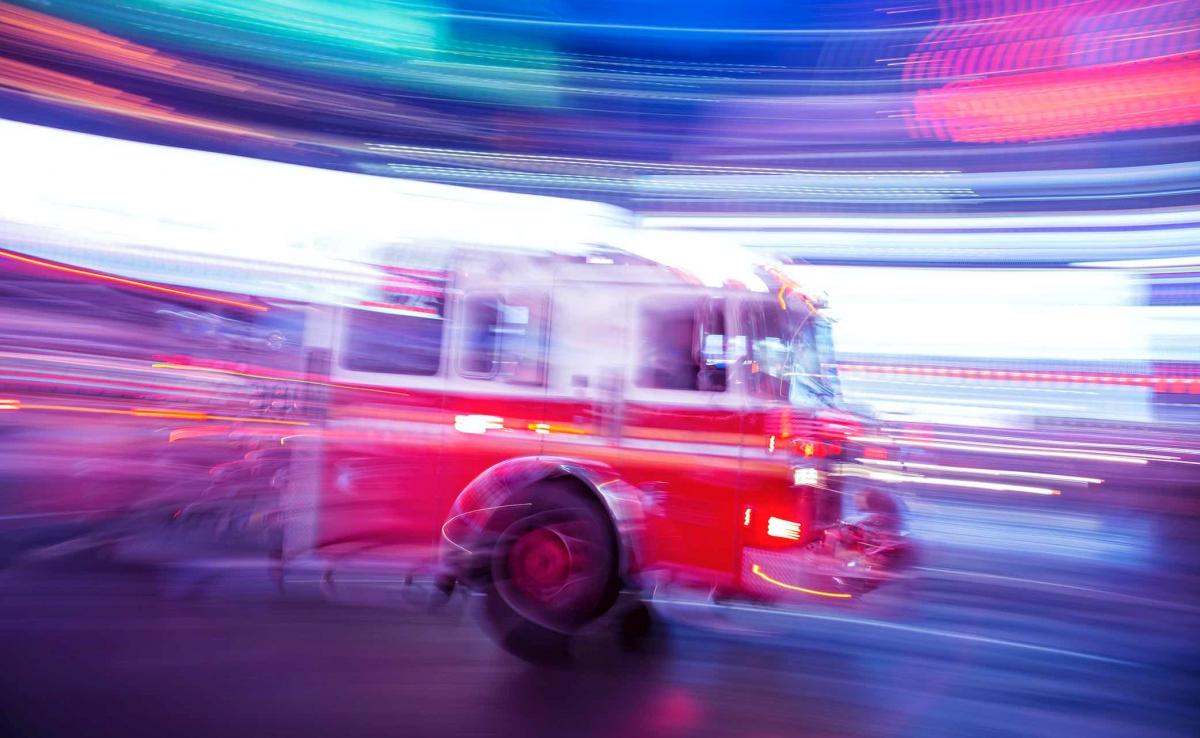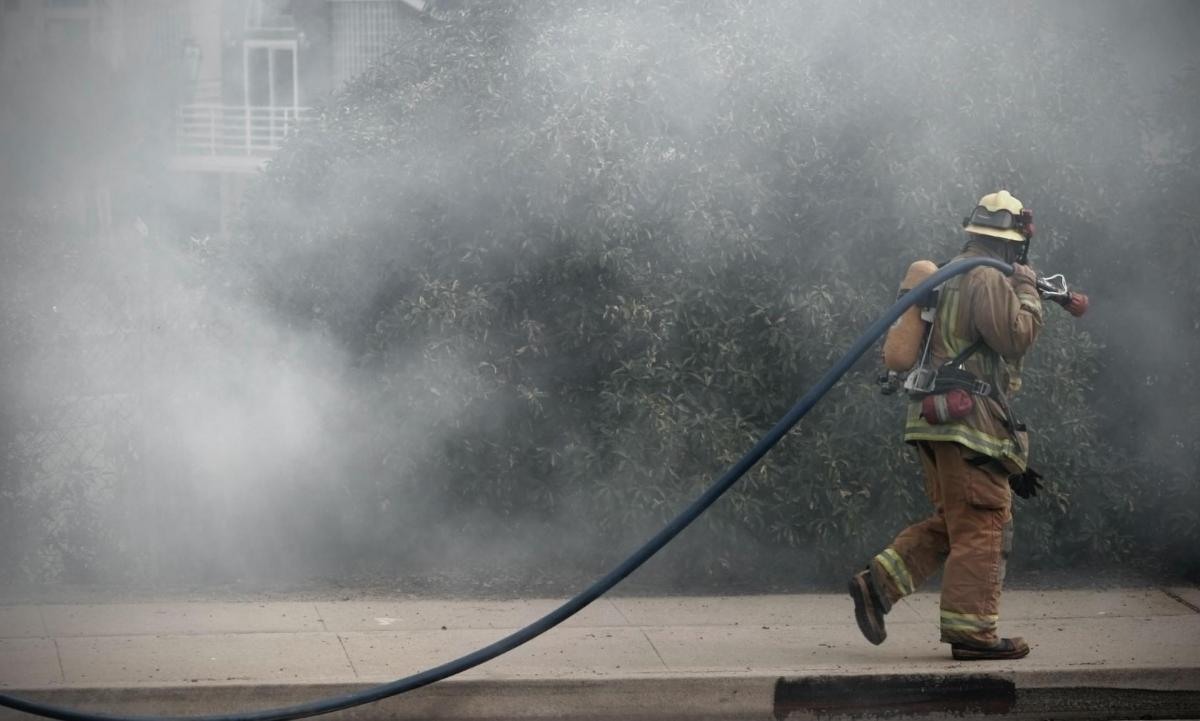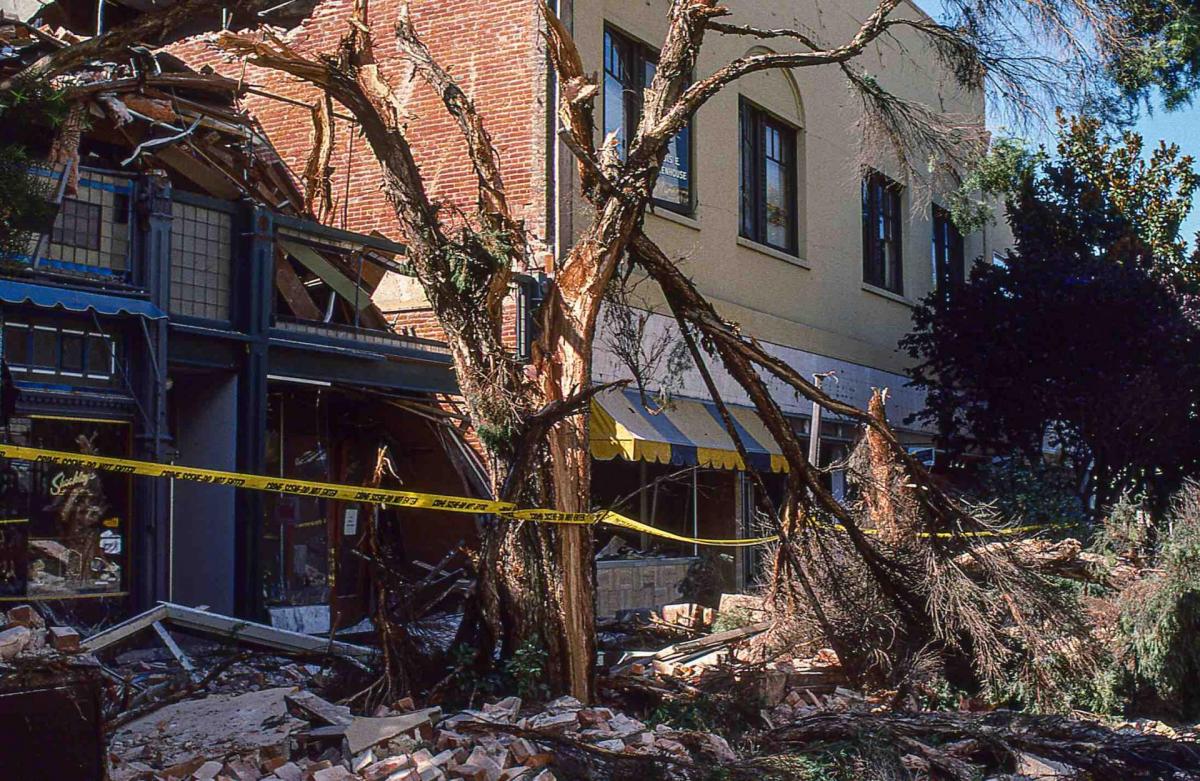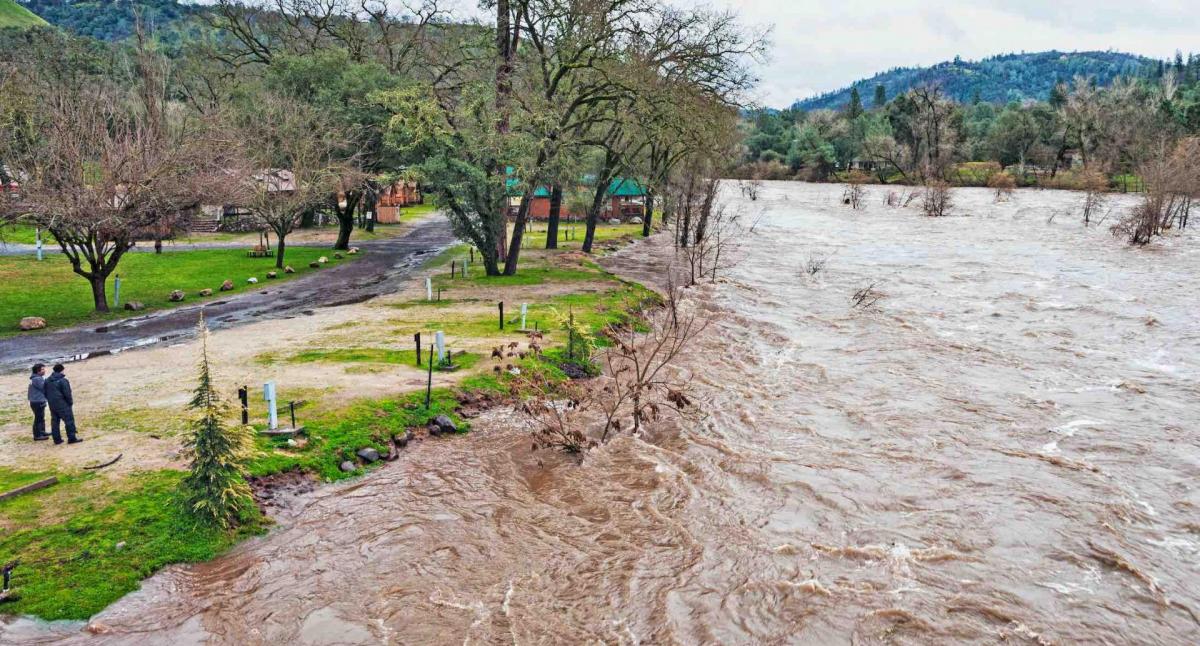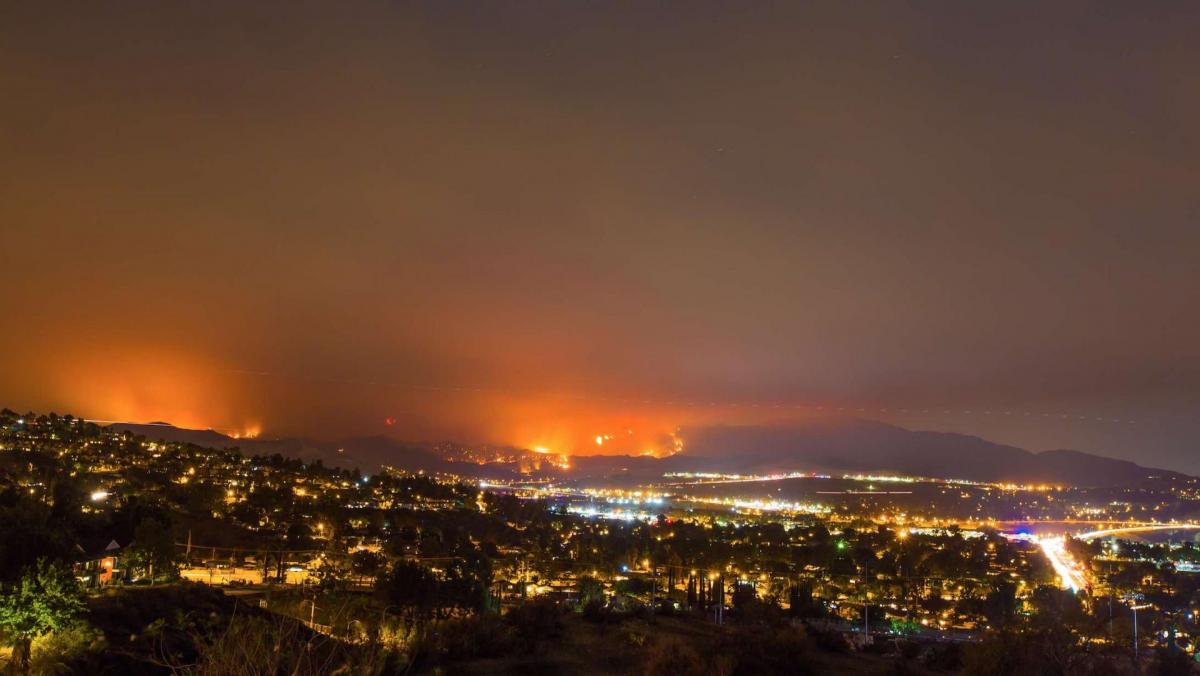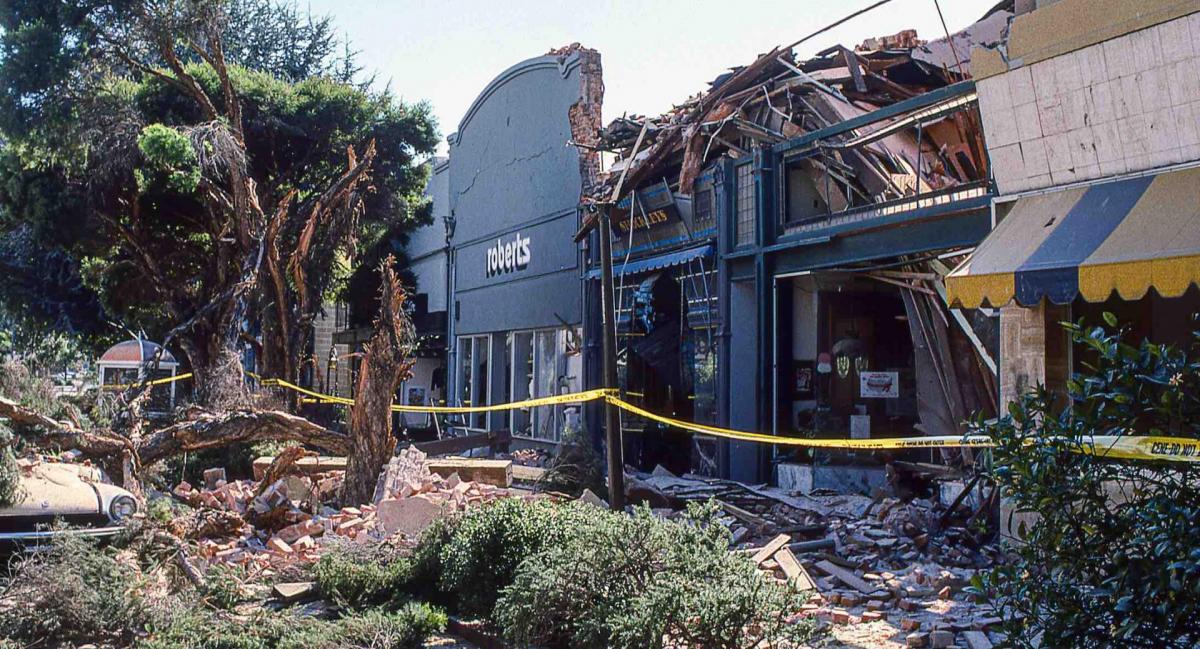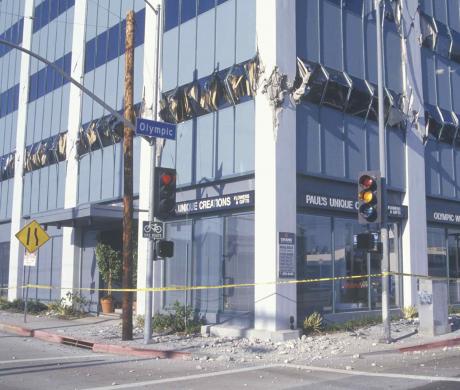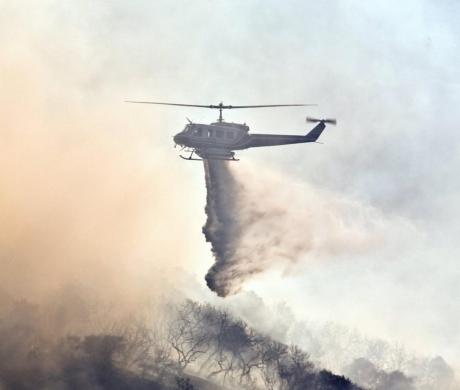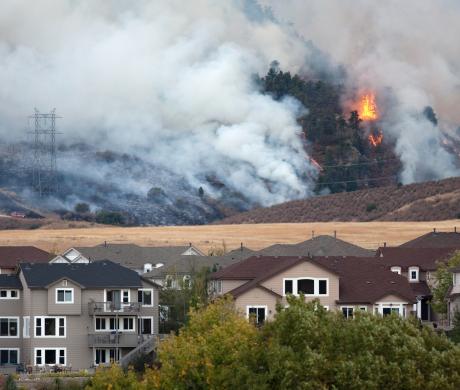Connecting the Dots on Emergency Preparedness, Recovery and Resilience
Michael McLaughlin is fire chief for the Cosumnes Fire Department, serving the cities of Elk Grove and Galt, and past president of the League’s Fire Chiefs Department. He also serves as legislative director for the California Fire Chiefs Association and as California director for the Western Fire Chiefs Association. McLaughlin can be reached at mclaughlin@wfca.com.
California’s emergencies and disasters include wildfires, earthquakes, flooding, mudslides and more. Local officials and public safety professionals recognize that we need to take a new approach when addressing disaster preparedness, recovery and resilience, particularly in the wake of the numerous major wildfires that have ravaged California in recent years. In response, the League made this a strategic goal in 2019: Improve disaster preparedness, recovery and climate resiliency.
Every disaster, whether it’s a wildfire, earthquake, flood, mudslide or other event, has three phases: before, during and after.
The Pre-Event Perspective
What can we do before an event occurs to prevent it or minimize the impact on the community if it cannot be prevented? Such activities cover everything from putting emergency notification systems in place to community planning and making sure building and fire codes for homes in the wildland-urban interface are adopted and implemented. (It’s important to note that the code is the minimum acceptable standard.)
In the case of earthquakes, pre-event issues include structure hardening — improving a building’s ability to withstand severe shaking — and establishing evacuation routes for the community. Evacuation routes present challenges for communities where routes in and out are limited and roads may be narrow, especially in more rural areas.
The amount of combustible material in the path of a fire is called the fuel load. With respect to wildfires, we are seeking ways to better manage the fuel load so that if a fire occurs, it doesn’t become so charged with energy and fast-growing that human intervention cannot stop it. Efforts to manage the fuel load over time have been limited by the existing air quality and California Environmental Quality Act (CEQA) standards. In short, prescribed burns will not be approved if there is not sufficient wind to dissipate smoke; however, to effectively control the burn, the amount of wind must be limited.
Local governments are engaged on all these fronts; for example, we have achieved much progress over time, in collaboration with the state, in reducing the impact of earthquakes in California. One of our greatest challenges is creating incentives to update and retrofit existing structures to meet modern building and fire code requirements. Existing, “nonconforming” structures built before code changes were implemented to address earthquake and wildfire safety issues are more likely to collapse in an earthquake and be destroyed in a fire.
It is critically important that we build our communities to meet and/or exceed the minimum codes. We cannot waive elements of the codes and allow our communities to build or be rebuilt to a lesser standard or history will repeat itself. With each experience, we learn, we grow, we improve and we rebuild.
Priorities During the Event
How do we mobilize the right resources most efficiently and effectively to minimize the impacts of an event that is already underway? In such cases, the priorities are to protect:
- The safety of human life;
- Property; and
- The environment.
Whether confronting widespread damage from an earthquake, flood, fire or mudslide, elected officials and public safety professionals are examining how we can best move from minimizing the impact of the event to recovery as quickly as possible.
The work we do to mitigate the risks and hazards before an event directly contributes to responders’ ability to contain and control the emergency and, ultimately, reduce the impacts of the disaster. After the emergency is over, it’s a matter of getting the community back on its feet and helping it become more sustainable and resilient.
Post-Event: Using Data to Build a Complete Picture
In post-event work, the No. 1 priority today is data collection. This is key to understanding why an event unfolded as it did, particularly in the case of wildfires. Armed with this information, we can make better-informed decisions about the best way to mitigate or avoid a future event in that location.
For example, when we compare the houses that burned down in the Town of Paradise during the Camp Fire with the houses that did not burn down, we look at numerous issues, including defensible space, the differences in age and types of construction and the order in which they burned.
In some areas of the post-fire environment, there is no apparent reason why one structure burned and another did not. For example, I was working in Paradise in the week after the Camp Fire. In the middle of the massive parking lot of a retail shopping center with no vegetation and where none of the surrounding buildings burned, a vehicle had burned completely down to the ground. How did that vehicle ignite when nothing around it burned? We can answer such questions by using data collection, simulations and modeling — and then implement measures in the pre-event environment to help prevent a future event from occurring.
The National Institute of Standards and Technology (NIST), one of the nation’s oldest physical science laboratories, is recreating the Camp Fire in a historical simulation using satellite imagery and on-the-ground reports submitted during the fire. By examining this data and studying the post-fire environment, we can learn how the fire moved and use this information — from fuel treatments to structure compositions and other elements — in pre-event planning.
The collective body of knowledge — what we need to know to make our communities more resilient and minimize the risk from wildfire — largely already exists. Now, we need to connect the dots in different ways to develop new solutions and strategies. We need to think differently and act differently.
Two other elements are directly related to these concerns — technology and the intersection of insurance and bonds.
Bringing Emergency Response Technology Up to Date
The issue of technology is interwoven with the need for data collection and analysis. My smartphone has more capacity and power than the computer used to put a man on the moon, and it fits in my pocket rather than an entire building. The capacity of today’s technology is amazing, but much of the tech we rely on for our mutual aid system is based on antiquated platforms. We need to incorporate a more technology-focused mindset into emergency response.
We made huge strides in 2019 by securing funding in the 2019–20 state budget for the State Emergency Telephone Number Account (SETNA) to support 911. This funding will keep 911’s next generation running, but it does not help address other technology issues.
Such issues include incompatible data systems and platforms. For instance, when my Fire Department is dispatched to an accident in which the affected vehicle is equipped with OnStar technology, the incident typically unfolds in this way. OnStar relays the location of the crash to our dispatch center via a 10-digit telephone number. Our crew responds, arrives on the scene, assesses the situation, renders care for the people involved and transports them as needed. In addition, we clean up the vehicle and any debris and spilled fuel. We make sure the area is safe and clean before opening the road to traffic.
In such a case, OnStar has a great deal of information about the accident that first responders can’t access, including:
- How fast the vehicle was moving when it collided;
- Whether the brakes were activated;
- If the vehicle rolled over and if so, how many times;
- Whether the vehicle is on its wheels;
- How many passengers are in the vehicle; and
- Whether they were wearing their seatbelts at the time of the accident.
This information would be immensely valuable in helping us make decisions related to treatment, transportation and resource requests. But no pathway currently exists to relay OnStar data to the screens of first responders’ computers, despite the advances of current technology.
That’s just one example of the technological gap between existing data and our ability to access it. And making emergency notifications more efficient — in an era when many people no longer have telephones with hardwired “land” lines and must be contacted via cellular communication — presents another set of challenges.
Although the way we’ve historically delivered emergency services still works, there is much room for improvement.
The Intersection of Insurance and Bonds With Risk Management
It is critically important that we partner with the insurance and bond industries to address many of these issues because we have a common mission: managing risk. How we do it and what we’re responsible for are very different, but nevertheless we are all working to reduce and manage risk.
When a home burns down, it’s a loss for the owner, the local Fire Department and the insurance company. It can also potentially affect the community’s bond liability.
To address this, the Western Fire Chiefs Association (WFCA), which comprises 11 states and territories, created a partnership with the Insurance Services Office (ISO), which helps establish rating schedules for fire departments, and a private company focused on providing real-time data to frontline firefighting efforts. Until recently, cost-effective technology has not been available to enable the insurance industry to access data at the individual property parcel level. This partnership is working to develop a system that uses geospatial technology to provide parcel-specific data that will allow ISO to access information at this micro level.
If you live in a very high fire-severity hazard area, for example, and you want to buy homeowner’s insurance, steps you have taken to mitigate fire risk on your property may or may not be recognized within the insurance risk methodology. The insurance company’s willingness to insure you depends on the hazards and perils of where you live. Suppose you have built a monolithic solid concrete building with no windows and 2-foot-thick steel doors on a property that’s wholly paved with no vegetation. If the risk assessment focuses on fuel types, road access and vegetation, you will likely be charged the same premium as the house next door with wood construction.
We currently have very limited methods of differentiating one such home from its neighbor, but work is underway to change that. The goals are to provide the insurance companies with far more precise tools for managing their risk at the micro level and — even more importantly — to provide incentives for people to take steps to make their homes and structures more fire resistant by going beyond the minimum requirements of the building code.
Fire chiefs are also working with the nonprofit Insurance Institute for Business & Home Safety (IBHS), a testing lab that evaluates residential and commercial construction materials and systems using realistic recreations of severe weather hazards. IBHS designed roof ties for hurricane-prone areas to prevent roofs being blown off houses during storms. Now WFCA is working with IBHS to identify the top 10 to 15 building components that have the greatest vulnerability to wildfire, test these features and identify design changes that can be made to fortify the structure from embers (which is how most structures are damaged or destroyed in wildfires), both for new construction and retrofitting existing structures.
Beginning with the 2007 California Building Code, Chapter 7A was added to address materials and construction methods for exterior wildfire exposure and set new standards for buildings to reduce fire vulnerability. During wildfires, homes were igniting because embers blew in through vents in the eaves and started fires in the attic, and the homes burned from the top down. Chapter 7A requires new home construction to employ fire-retardant materials in eaves to help prevent this. The code sets requirements for all structures built since 2008, but the hundreds of thousands of other homes in the state built before that time don’t comply with the code and are at greater risk for destruction by wildfire. Research from recent fires shows that 30 percent of the buildings constructed to this 2008 standard were damaged or destroyed, compared with a 90 percent loss rate for structures not built to that standard. Properties that had passed their first defensible space inspection have similar survival rates.
Incentives offer an answer to addressing this challenge. In the same way that the state reduced energy consumption by providing incentives to homeowners to install energy-efficient features such as windows, lights and appliances, we must work to reduce fire risk. We need to create incentives for homeowners — in conjunction with the insurance industry — so that if they implement specific measures to make their home more fire resilient, their policy will be renewed and their premium will not increase for a set amount of time.
It is essential to recognize that it will take time — perhaps decades — to prove these facts and test actuarial tables. By collaborating with the insurance industry to implement strategies to create incentives to upgrade existing, nonconforming properties, we can address the expectations of the voters and the demands of economic growth.
Disasters also affect the municipal bond market. Suppose the Town of Paradise had secured a $10 million bond to rebuild its water system before the Camp Fire occurred. After the fire destroyed 90 percent of the town’s structures, how would the city repay that bond? Furthermore, suppose in our hypothetical scenario, that a town near Placerville or Colfax seeks a $5 million bond to rebuild old infrastructure, but the bond underwriters refuse because the community’s fire risk is too high. This would have a profound impact on our cities’ future. If we lose our ability to secure bonds to underwrite improvements to our communities, the vitality of our communities will be severely diminished.
Deploying Critical Resources Before the Event
Formed in the wake of California’s worst fire catastrophes, Disaster Readiness for Safer Communities (D-RiSC) is a statewide coalition of organizations representing California’s fire chiefs, firefighters and local governments committed to improving our disaster response capability. The coalition’s core mission is to modernize California’s mutual aid response network into a proactive system with the tools and funding necessary to anticipate weather-driven disasters and to pre-position personnel, equipment and communications to combat disasters before they strike.
For example, suppose a flood is likely because a storm moving toward us is bringing torrential rains or an area is going to be under red flag conditions because a wind event is coming that will significantly exacerbate the likelihood of a wildfire. We should have the ability — and funding — to put resources in place ahead of a weather or fire event to help us prepare to respond to a disaster. Proactive measures like this require funding.
Of the resources deployed to respond to the majority of California wildfires, 85 percent come from our local governments — not Cal Fire, the U.S. Forest Service or other land management agency. The majority are firefighters from your community responding as part of the state mutual aid system to staff and operate firefighting efforts.
Efforts to secure this funding began in 2018 with the support of the governor and the Legislature. The 2018–19 and 2019–20 state budgets include $25 million per year earmarked for pre-deploying local government resources for disaster response.
This funding is critically important. During the 2015 Valley Fire in Lake County, my department closed two fire stations and sent those resources to fight the fire because lives and property were being lost. In an emergency, we have long-standing agreements in place to reimburse local governments for the costs of these responses. It’s hard for me to ask my community’s taxpayers to pay for sending a fire engine and firefighters (on overtime) to another community to sit in readiness because a fire may ignite. Funding is now included in the state mutual aid budget to ensure that we can pre-deploy resources without imposing the additional cost burden on local governments that are willing to send firefighters and equipment to support neighboring firefighting efforts with pre-positioning.
Funding pre-positioning for local government emergency resources was a tough decision made by the Legislature and governor, but it has paid dividends. In advance of the 2017 Thomas Fire, dozens of local government fire resources were pre-positioned in Ventura County. These pre-positioned resources were explicitly responsible for evacuating an entire neighborhood and protecting the only road out that was being overrun with fire; all residents were able to escape without harm. If these resources had not been there, the outcome would have been very different.
Persuading the Legislature to include this in the budget every year is a challenge because it is essentially a proactive, preventive measure much like an insurance policy. Thus far, we have not had the same number of large fires in 2019 as in 2018, so we have not had to deploy those resources. A slower fire year doesn’t mean, however, that the money isn’t needed again in next year’s budget.
The Importance of Building Codes in Protecting Lives
Building codes are developed based on the history of disasters, tragedies and misfortunes — and observations made after such events. The codes represent a collective body of knowledge put in place to prevent something that’s happened in the past from happening again in the future. For example, the need for shear walls in construction became clear following earthquakes in which houses fell off their foundations, so we developed a way to tie a house to its foundation and updated the building code.
In the context of the affordable housing crisis, some people have asked whether some of these code requirements could be waived for accessory dwelling units to expedite construction and rebuilding, particularly after a fire. In my opinion, this is asking us to turn our backs on something that was put in place likely because multiple people died when these codes did not exist. While one life lost does not trigger a code change, multiple deaths typically will.
After the Cypress Street Viaduct section of the Interstate 880 freeway collapsed in Oakland during the 1989 Loma Prieta earthquake, we didn’t rebuild another double-stacked freeway in that location. Based on the evidence of what happened, we took action to prevent a similar occurrence. In the same vein, if more homes were constructed from — or updated with — fire-resistant materials, they could survive where others would not.
Making Strides Toward a Better Future
To make our communities safer, we must be better informed. We must think differently and act differently by using existing data and collaborating to design and implement new solutions. The public must be involved in reducing fire risk and mitigating other disasters. In this way, we can continue to improve public safety, our responders’ capacity and the resilience of our communities.
Related Resources
Disasters in California: A Brief Overview of Preparedness, Proclamations and Assistance
Disaster Readiness for SAFER Communities www.d-risc.org/our-coalition
Wildland Hazards and Building Codes, Cal Fire https://osfm.fire.ca.gov/divisions/wildfire-prevention-planning-engineering/wildland-hazards-building-codes/
Western Fire Chiefs Association https://wfca.com
Western Fire Chiefs Association Wildfire Initiative, www.wildfireinitiative.org
Insurance Institute for Business & Home Safety
https://disastersafety.org/wildfire/
Headwaters Economics, The Full Community Costs of Wildfire
https://headwaterseconomics.org/wp-content/uploads/full-wildfire-costs-report.pdf
Headwaters Economics, Building a Wildfire-Resistant Home: Codes and Costs https://headwaterseconomics.org/wp-content/uploads/building-costs-codes-report.pdf
This article appears in the November 2019 issue of Western City
Did you like what you read here? Subscribe to Western City
Photo Credits: P_Wei (fireman); GomezDavid (damage in Santa Cruz); Jerry Moorman (American River); FrozenShutter (2016 Sand Fire); GomezDavid (buildings with earthquake damage)

